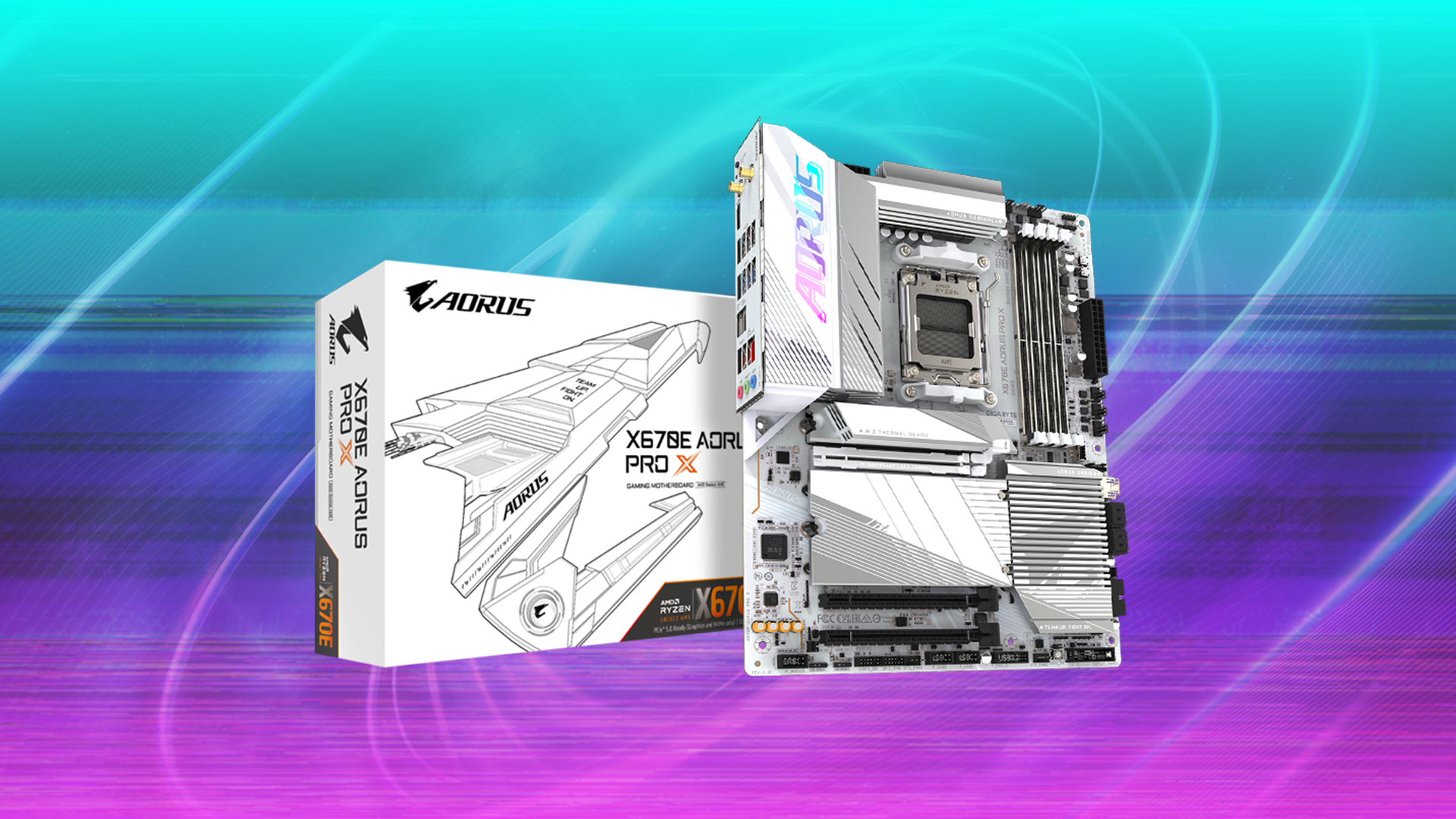These DIY-friendly motherboards will help make your next computer build effortless

When you're building a computer, it's easy to get hung up on the gear that will make your rig faster, like RAM and a topflight graphics card. Those are important, sure, but your next computer is only going to go as far as its motherboard will take you.
The Aorus Ice Series is Gigabyte's flagship motherboard series for a reason. This hardware can handle whatever you throw at it, with a history of releases that are easy for any DIY builder to install and use. Today, I'm focusing on the Z790 Aorus Elite AX Ice and the X670E Aorus Pro X, a Tom's Hardware Editor's Choice.

Push It to the Limit
What's the number-one thing everyone wants their PC to have? Power. More power means more speed, stability and efficiency. Aorus gaming motherboards feature all-digital power designs to ensure processes are stable. The Aorus Ice Series delivers that stable power with the Twin Digital VRM. This VRM is designed to excel when you're overclocking your device, so you can push your computer to its full potential without worrying about stuttering.
Speaking of overclocking, both the Z790 and the X670E are built to get the most out of your computer's memory. With MT/s speeds up to 8,000, the DDR5 overclocking will let you push your computer to the limit. The BIOS functions provide one-click access to a litany of customization options. Want to shorten latency? One click. Want to increase your bandwidth? One click. The X670E Aorus Pro X even features an onboard video port for you to keep an eye on specs like CPU power, memory usage and network speed right on the side of your computer. Getting the most out of your components has never been simpler.

Make It Your Own
You can talk about numbers all day, but anyone building their own PC wants the process to be fun. Gigabyte understands this. The Aorus motherboards' EZ-Latch designs take a lot of problems off the table. The heatsinks and SSDs have screwless installs, and attaching or detaching a new graphics card is as simple as the push of a button.
What's the point of building your own computer if you can't personalize it? Once you get your device up and running, the Aorus motherboards have a suite of customization options to suit your style. The Gigabyte Control Center lets you program the RGB lighting on your motherboard (each LED individually, if you want), and you can also add regularly used processes to your Favorites menu for easy access. The UEFI BIOS interface is user-friendly, with an Easy Mode setting that provides the most important hardware information on one page. These features help you ditch the complications. Most of us only use, like, four programs anyway.

Cool and Consistent
The looks aren't the only icy thing about these motherboards. The key to keeping them cool is in their full-metal thermal design. The surface is up to three times larger than the traditional heatsink, providing unparalleled dissipation. The multi-cut design allows for tons of airflow. That's before you even get into the Smart Fan 6 precise control and temperature tracking.
Keeping your computer cool helps maintain your components, but Gigabyte's Ultra Durable™ Technology does the rest of the work to keep your new rig running. These slots will help protect your computer parts with reduced signal degradation for your memory and rubber lining to keep your graphics card from getting scratched. Installing and upgrading is a breeze, ensuring your DIY PC won't be obsolete in a week.
Powerful and Reliable
We call it a motherboard for a reason — without a good one, your computer simply won't function properly. Your power delivery will struggle during gaming, your upgrade options will be limited and you'll have to deal with freezes and crashing at the worst possible moments. Give your DIY project the best chance at success with the Aorus Ice Series. These motherboards allow you to innovate, compete and evolve. What more could you want?
Get Tom's Hardware's best news and in-depth reviews, straight to your inbox.

Jacob York is a Branded Content Editor and Writer for Future, focusing on the Games and Tech verticals. Jacob's previous writing experience encompasses everything from award winning plays to websites about tree removal services. The tree removal website also won an award.
In his spare time, he enjoys learning how to bake, spending time at a theme park with his wife, and doing "product research" by diving into a video game. A creative through and through, Jacob would like to take a moment to remind you to support your local Equity hiring theatre.
-
LongTallMatt Lol... You do know we used to have to set clock speeds and multipliers with dip switches right? LolReply
DIY friendly... Yeah definitely sponsored content...